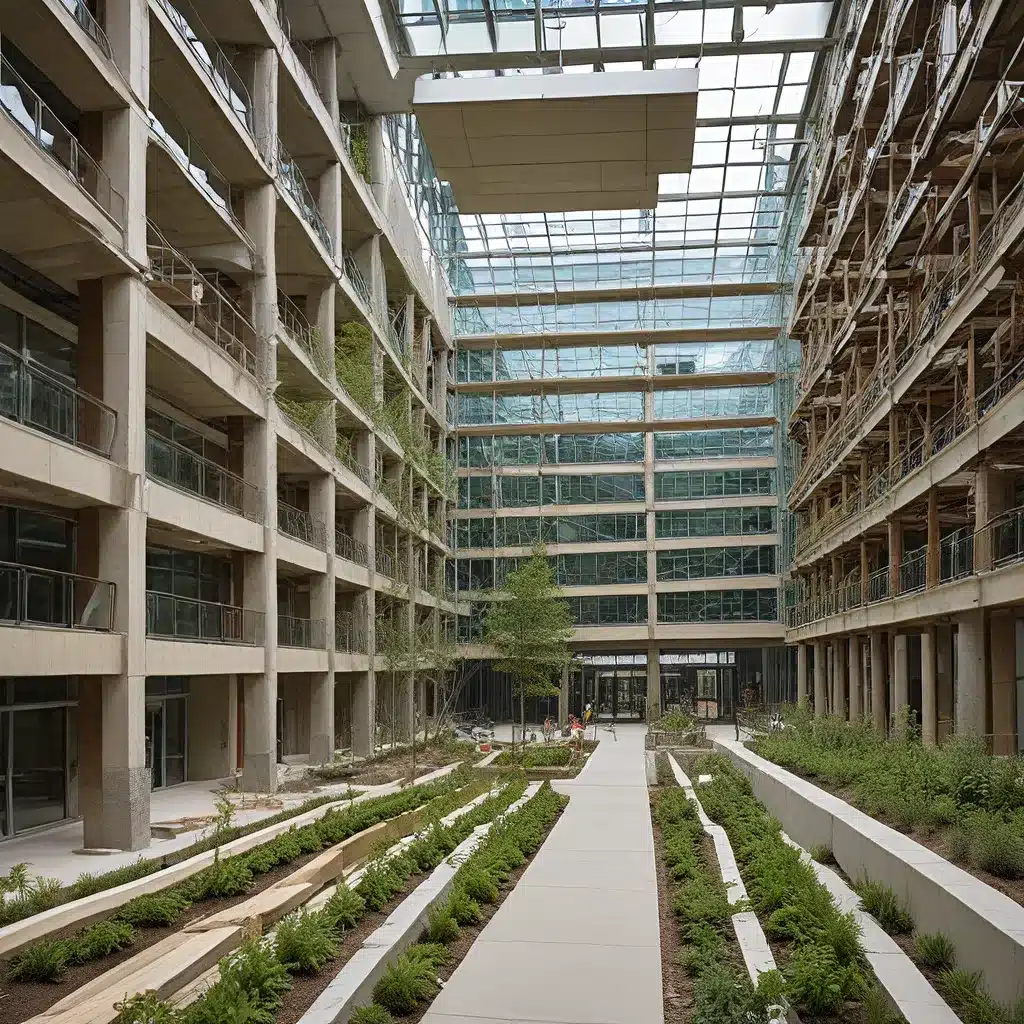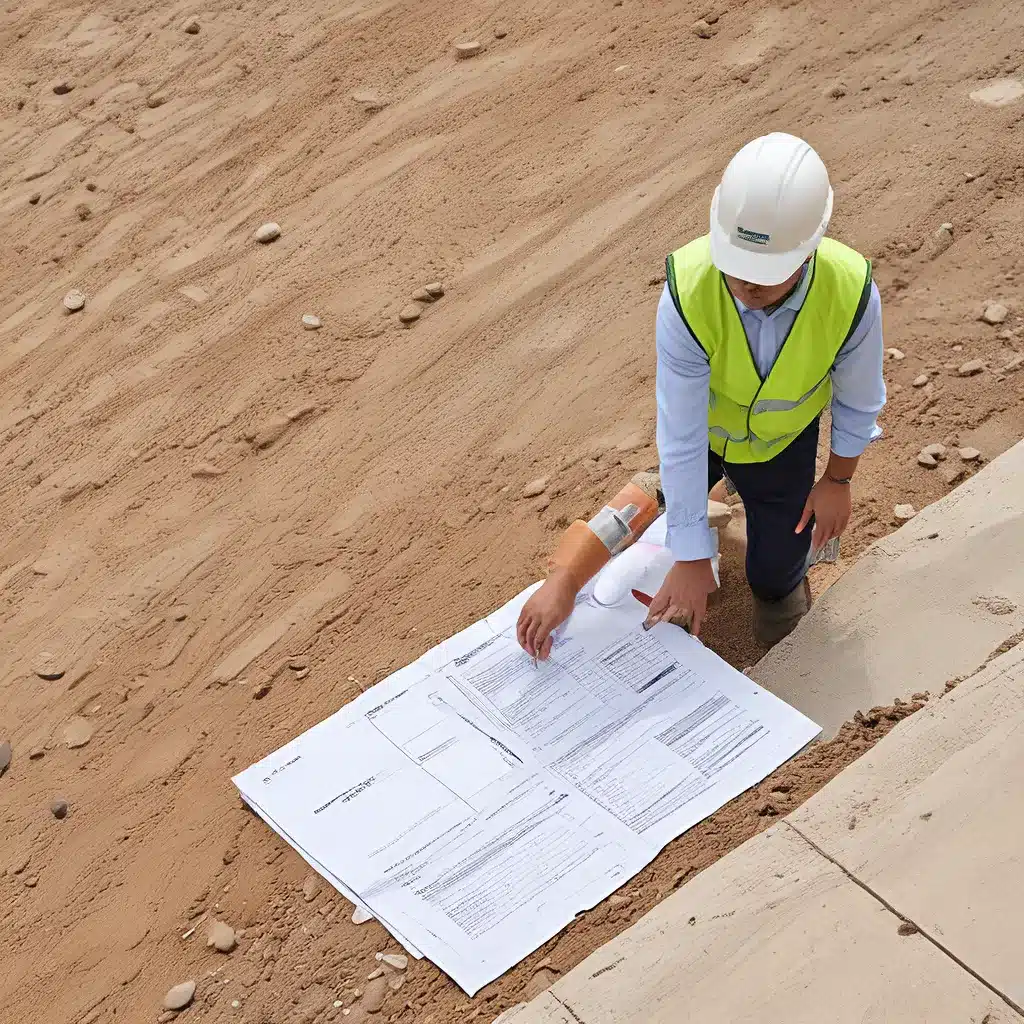
As a seasoned general contractor with over two decades of experience, I’ve seen the construction industry evolve at a rapid pace. One of the most significant transformations we’ve witnessed is the rising tide of sustainable, or “green,” building practices. And let me tell you, navigating this ever-changing landscape is like trying to find your way through a lush, verdant forest – it requires a keen eye, a sturdy compass, and a whole lot of adaptability.
Striking a Balance: Sustainability and Efficiency
When it comes to green building, the name of the game is balance. On one hand, we have the imperative to reduce our environmental impact, minimize carbon emissions, and create structures that are kinder to our planet. But on the other, we can’t forget the bottom line – our clients demand cost-effective solutions that don’t compromise on quality or performance.
It’s a delicate dance, I tell you. But the way I see it, the key is to embrace innovative strategies and cutting-edge technologies that allow us to achieve both sustainability and efficiency. Take, for example, the rise of passive design principles. By strategically orienting buildings, incorporating green roofs, and leveraging energy-efficient systems, we can create structures that practically run themselves, minimizing resource usage and operational costs.
And let’s not forget about the power of advanced materials. Nowadays, we’re talking about self-healing concrete, flexible graphene composites, and carbon-capturing bricks – the stuff of science fiction, turned into reality. These purpose-driven materials not only boast impressive durability and performance, but they also help us reduce the embodied carbon of our projects, making them true game-changers in the world of sustainable construction.
Embracing the Digital Revolution
But the real secret sauce, my friends, lies in the digital realm. As we speak, the construction industry is undergoing a transformative shift, harnessing the power of technologies like building information modeling (BIM), internet of things (IoT) sensors, and – wait for it – generative artificial intelligence (AI).
Imagine being able to model a building’s carbon footprint and energy efficiency before a single brick is laid. Or envision a future where drones and autonomous vehicles handle the grunt work on-site, freeing up our skilled workers to focus on the more intricate, value-added tasks. That’s the kind of future we’re barreling towards, and let me tell you, it’s a game-changer.
Now, I know what you’re thinking – “Generative AI? Isn’t that the stuff of sci-fi movies?” Well, my friends, the future is now. Leading construction firms and tech companies are already exploring the vast potential of this technology, from automating the design of energy-efficient building systems to optimizing construction schedules and material sourcing.
Of course, with any technological advancement, there are challenges to overcome. Concerns about data security, risk mitigation, and the trustworthiness of AI-generated outputs are top of mind for industry leaders. But trust me, if we approach this with a strategic, well-rounded mindset, the benefits of harnessing generative AI and other emerging technologies far outweigh the risks.
Navigating Economic Uncertainty
But the green building landscape isn’t the only thing we have to navigate – there’s also the ever-changing economic climate to contend with. And let me tell you, the past few years have been a real rollercoaster ride.
One minute, we’re riding high on a wave of infrastructure investment and clean energy initiatives, courtesy of game-changing legislation like the Inflation Reduction Act and the Infrastructure Investment and Jobs Act. The next, we’re grappling with rising interest rates, supply chain disruptions, and labor shortages that threaten to throw a wrench in our best-laid plans.
It’s enough to make your head spin, I know. But as seasoned general contractors, we’ve weathered our fair share of storms. And let me tell you, the key to navigating this uncertain landscape is to stay nimble, adaptable, and strategic.
That means exploring creative financing options, like equipment leasing and project-specific partnerships, to mitigate the impact of cost volatility. It also means tapping into the wealth of government incentives and tax credits available for energy-efficient upgrades and clean energy infrastructure projects. After all, why let those funding opportunities go to waste when they could be the difference between a successful project and a costly headache?
Tapping into the Talent Pipeline
Of course, none of this would be possible without the backbone of our industry – the skilled workers who bring our visions to life, day in and day out. And let me tell you, the talent pipeline in construction has been a persistent challenge, even as the demand for our services continues to surge.
It’s a tricky balancing act, to be sure. On one hand, we’re facing a retiring workforce, with seasoned veterans hanging up their hard hats and leaving a gaping hole in our ranks. On the other, we’re competing with other industries for the attention of a younger generation that seems more drawn to the tech sector than the trades.
But as they say, where there’s a will, there’s a way. And at Reading General Contractor, we’re not ones to back down from a challenge. That’s why we’ve been doubling down on our workforce development efforts, reaching out to high schools, community colleges, and even veterans’ groups to cast a wider net and bring fresh talent into the fold.
It’s all about thinking outside the box, my friends. Maybe that means offering more competitive salaries and benefits to attract and retain the best and brightest. Or perhaps it involves partnering with local training programs to upskill our existing workforce and prepare them for the demands of the future. Whatever the solution, one thing is clear: we can’t afford to let the talent gap hold us back, not when there’s so much opportunity on the horizon.
Embracing Change, Seizing Opportunity
And that, my friends, is the essence of what it means to be a general contractor in the 21st century. It’s about staying agile, embracing change, and seizing every opportunity that comes our way – whether that’s harnessing the power of emerging technologies, aligning our practices with the latest sustainability trends, or tapping into the wealth of funding and incentives available for green building projects.
Because let’s be honest, the construction industry has always been a dynamic, ever-evolving landscape. And as we steer our way through the verdant forest of the green building revolution, the companies that thrive will be the ones that can adapt, innovate, and stay ahead of the curve.
So, what are you waiting for? Let’s dive in, roll up our sleeves, and show the world how Reading General Contractor is leading the charge towards a more sustainable, efficient, and prosperous future. After all, the foundation of a greener tomorrow starts with the work we do today.
Related posts:
No related posts.




